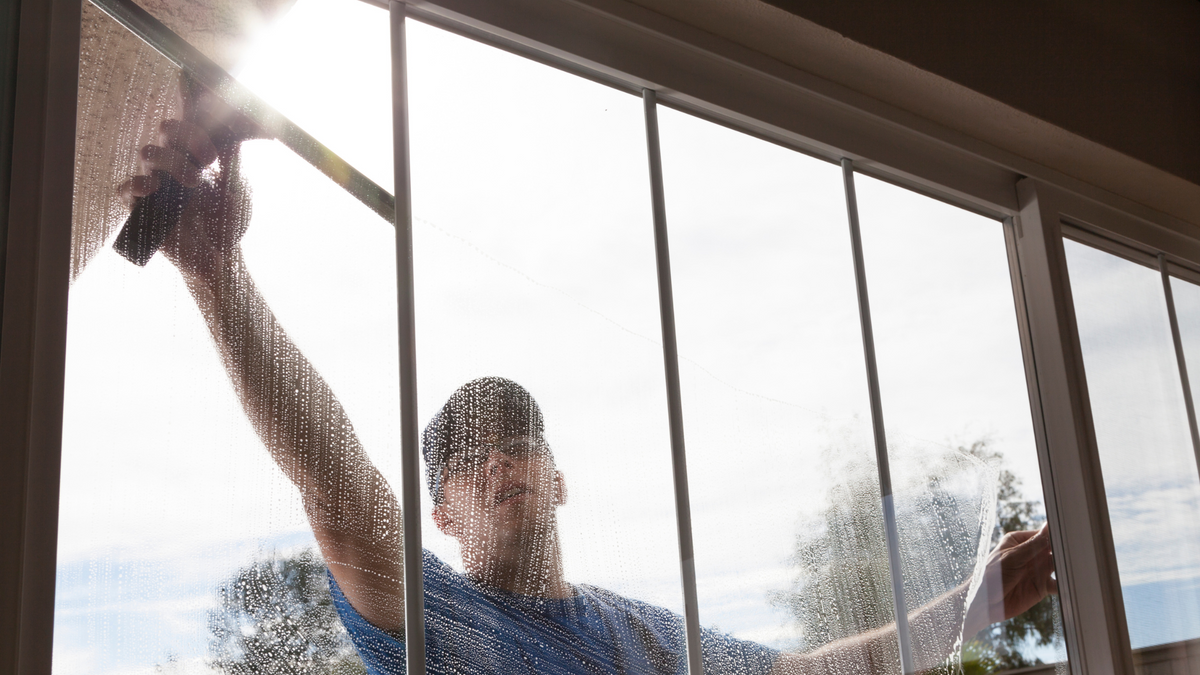Your Cart (0)
Free Shipping On Orders $75+
100% MONEY-BACK GUARANTEE - SHOP NOW
TRUSTED BY THOUSANDS
MONEY BACK GUARANTEE
24-HOURS SUPPORT
Free Shipping On Orders $75+

Have you ever looked at your glass shower door and thought, “Hmm, I wonder how I can end up with fewer streaks next time I clean this?”. The answer lies in science! We’ve done some research and found a few intriguing facts about glass cleaning that might help to make your next cleaning mission a little easier.
Streaks on glass are often caused by the uneven distribution of cleaning products and water on the surface.
Cleaning glass windows and doors on a hot, sunny day can cause the cleaning solution to dry too quickly, leaving streaks and residue behind.
Additionally, when we use a circular cleaning motion, the strokes can re-deposit dust and debris from back onto the surface, so we recommend cleaning in horizontal or vertical strokes on glass surfaces to reduce the likelihood of streaks.
Glass has a relatively high surface tension, causing water molecules to stick together and form droplets. When you use a high-quality glass cleaner, it works to break down this tension, allowing the liquid to spread out in a thin, even layer.
Most glass cleaners contain surfactants for this very purpose. Surfactants are essentially molecules that have a hydrophilic (water-attracting) head and a hydrophobic (water-repelling) tail. When used in cleaning, the hydrophobic tails push away from the water, while the hydrophilic heads interact with the water. This reduces surface tension allowing the water and cleaner fluid to spread evenly over the glass, providing a better clean.
A word of warning when it comes to surfactants: It has been proven that many surfactants are harmful to humans, animals and the natural environment. We suggest choosing eco-friendly glass cleaning products that either don’t contain surfactants or ones that utilise eco-friendly versions of this type of chemical.
Microfibre cloths are made from teeny tiny fibres that are constructed in an extensive network of microscopic hooks and loops. When used to clean glass, these fibres attract and trap dirt, dust, oils and other debris within their intricate structure. This prevents the debris from re-gathering on the glass surface throughout the wiping process.
Because of the super fine texture of the fibres, this type of cleaning cloth is one of the gentlest options for cleaning glass surfaces.
Next time you get to work cleaning your glass windows or surfaces, take a minute to appreciate the incredible science at work!


A powerful mould remover that seeps down to the root of the mould to remove it and prevent it from re-surfacing again.


A powerful mould remover that seeps down to the root of the mould to remove it and prevent it from re-surfacing again.


A powerful mould remover that seeps down to the root of the mould to remove it and prevent it from re-surfacing again.


Bye mould & glass stains, your all-in-one glass stain and mould remover bundle is here!




A powerful mould remover that seeps down to the root of the mould to remove it and prevent it from re-surfacing again.
Powerful and effective solution for removing stubborn stains, mineral deposits, and soap scum from glass surfaces.






Bye mould & glass stains, your all-in-one glass stain and mould remover bundle is here!
Powerful and effective solution for removing stubborn stains, mineral deposits, and soap scum from glass surfaces.


A powerful mould remover that seeps down to the root of the mould to remove it and prevent it from re-surfacing again.
Powerful and effective solution for removing stubborn stains, mineral deposits, and soap scum from glass surfaces.




A powerful mould remover that seeps down to the root of the mould to remove it and prevent it from re-surfacing again.
Powerful and effective solution for removing stubborn stains, mineral deposits, and soap scum from glass surfaces.






Bye mould & glass stains, your all-in-one glass stain and mould remover bundle is here!
Powerful and effective solution for removing stubborn stains, mineral deposits, and soap scum from glass surfaces.


A powerful mould remover that seeps down to the root of the mould to remove it and prevent it from re-surfacing again.


A powerful mould remover that seeps down to the root of the mould to remove it and prevent it from re-surfacing again.


A powerful mould remover that seeps down to the root of the mould to remove it and prevent it from re-surfacing again.


A powerful mould remover that seeps down to the root of the mould to remove it and prevent it from re-surfacing again.




Bye mould & glass stains, your all-in-one glass stain and mould remover bundle is here!


Bye mould & glass stains, your all-in-one glass stain and mould remover bundle is here!
Powerful and effective solution for removing stubborn stains, mineral deposits, and soap scum from glass surfaces.


A powerful mould remover that seeps down to the root of the mould to remove it and prevent it from re-surfacing again.
























A powerful mould remover that seeps down to the root of the mould to remove it and prevent it from re-surfacing again.


A powerful mould remover that seeps down to the root of the mould to remove it and prevent it from re-surfacing again.


Bye mould & glass stains, your all-in-one glass stain and mould remover bundle is here!








A powerful mould remover that seeps down to the root of the mould to remove it and prevent it from re-surfacing again.
Powerful and effective solution for removing stubborn stains, mineral deposits, and soap scum from glass surfaces.














Super-smooth, super-soft and super results all wrapped up in our microfibre cloths
Free Shipping On Orders $75+
